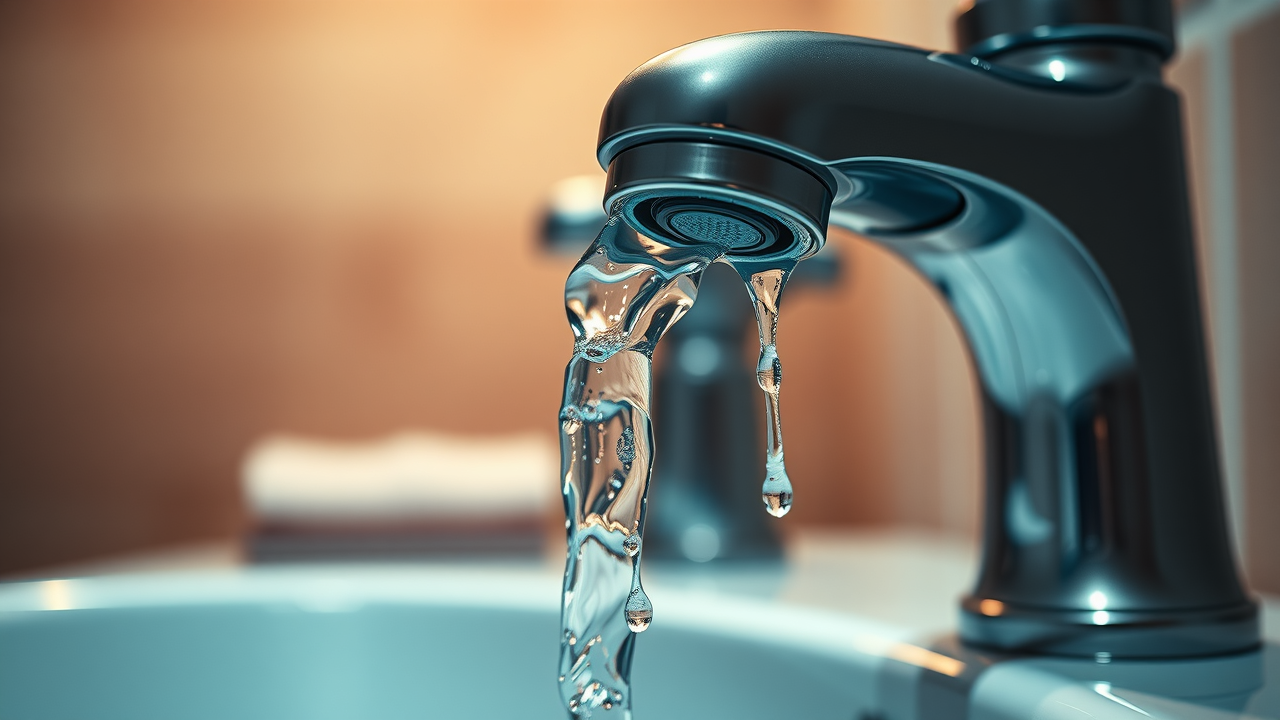Wondering how do you handle a plumbing emergency? Discover the essential steps to handling emergency situations, from identifying common plumbing emergencies to quick fixes that protect your home and minimize damage. Learn how to act fast during plumbing emergency situations and when to seek professional help. Stay prepared and keep your home safe with our expert guide on handling a plumbing emergency.
Did you know a single burst pipe can release more than 100 gallons of water in just eight hours? Most homeowners underestimate how quickly a plumbing emergency, such as a burst pipe or gas leak, can escalate into costly water damage. From sudden floods to gas leaks and malfunctioning water heaters, these situations can destroy property, drive up repair bills, and even jeopardize your family’s safety. But with the right knowledge and rapid response, you can minimize damage—and avoid disaster.
Staggering Numbers: Why Knowing How Do You Handle a Plumbing Emergency Can Save Your Home
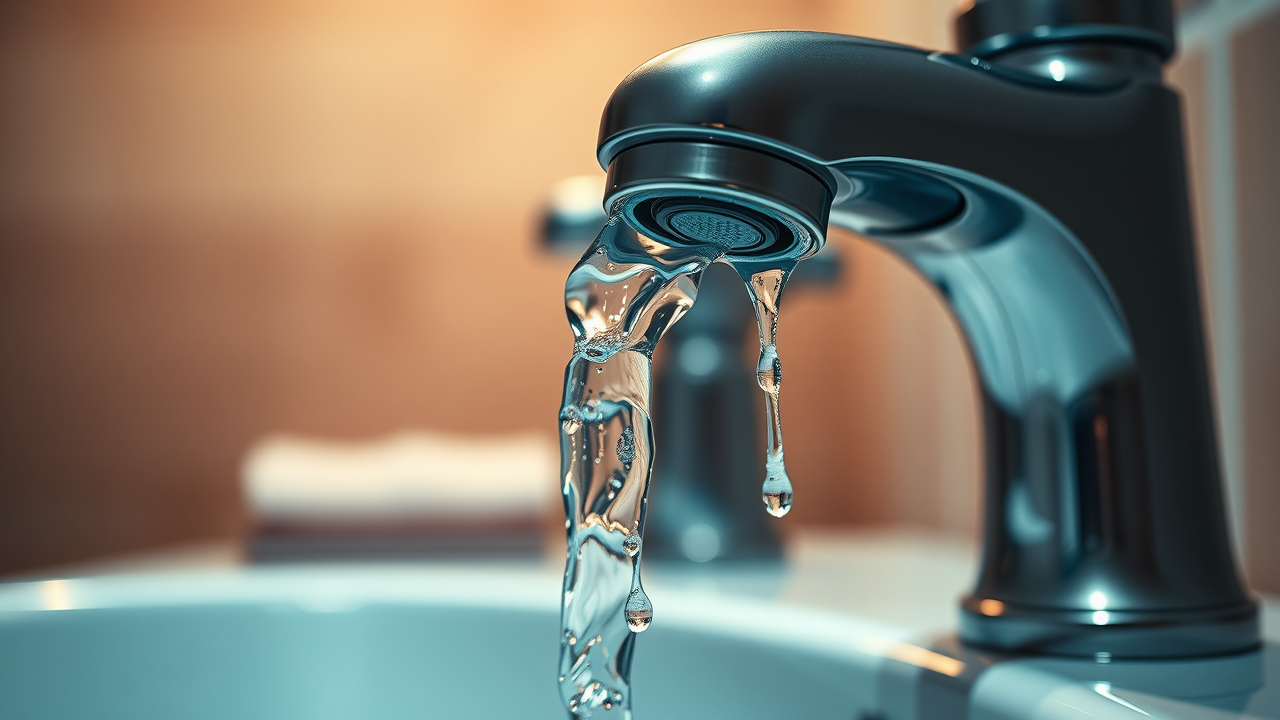
When facing a plumbing emergency, including burst pipes or water leaks, swift action is crucial to minimize water damage and protect your home. The average burst pipe can cause extensive water damage within minutes, impacting costly flooring, furniture, and even the structure of your home. National data highlights the financial risks: insurance industry reports show water damage claims run into billions each year—with the main water supply and plumbing emergencies as leading contributors. Understanding how do you handle a plumbing emergency becomes critical in protecting your home and family from chaos and major expenses.
Common plumbing emergencies include burst pipes, sudden water leaks, dangerous gas leaks, and overflowing toilets that require immediate attention. Each scenario calls for different immediate responses, yet the clock is always ticking. Familiarity with warning signs and the layout of your plumbing system is invaluable for minimizing losses. Consider these numbers: A single leaky pipe can waste up to 90 gallons of water a day, and an unchecked water heater malfunction could cause extensive property damage and even safety hazards.
“A single burst pipe can release over 100 gallons of water in just eight hours, causing devastating water damage and costly repairs.” — National Association of Home Builders
What You’ll Learn About How Do You Handle a Plumbing Emergency
- Spotting warning signs of a plumbing emergency
- Immediate actions to minimize water damage
- How to quickly find the main water shut-off valve
- Common plumbing emergencies and troubleshooting
- When to call professional plumbing services
Understanding a Plumbing Emergency: Definition and Scope
What Constitutes a Plumbing Emergency?
A plumbing emergency is any sudden, severe issue within your plumbing system that poses an immediate risk to property, health, or safety. Burst or leaking pipes, overflowing toilets, major water heater breakdowns, and gas leakstop the list of urgent threats. Unlike routine leaks or slow drains, these situations demand rapid attention because the potential for water damage or exposure to hazardous gases is high. Problems requiring emergency service often disrupt the flow of water entirely, threaten the integrity of infrastructure, or even create environmental hazards from damaged sewer lines.
The moment you suspect a plumbing emergency, such as a burst pipe or water leak, your priority is to stop further damage by locating and shutting off the main water supply valve. While not every plumbing issue qualifies as an emergency, look for clear red flags: rapid flooding, strong odors (especially gas), no access to clean water, or overflow that can't be controlled.
Common Plumbing System Failures and Gas Leaks
The most common causes of plumbing emergencies include sudden pipe bursts—often caused by freezing temperatures or wear and tear—catastrophic water heater malfunctions, and gas leaks. A gas leak is particularly urgent: you might smell rotten eggs, hear hissing near a gas line, or even feel dizzy or nauseous. In these cases, recognize the signs quickly, evacuate, and never use electronics or open flames.
Other frequent emergencies are sewer line backups and fast-flowing leaks that overwhelm your ability to control the flow of water. When in doubt, prioritize safety over attempted fixes and call a licensed plumber immediately. Understanding these hazard types and their warning signs is the first step in any emergency action plan.
Warning Signs: Detecting a Plumbing Emergency Before Disaster Strikes
Early Indicators: Water Leak, Water Pressure, Overflowing Toilet, and Water Heater Issues
Recognizing warning signs like water leaks, drops in water pressure, or unusual odors can help you prevent severe water damage and costly plumbing emergencies. Watch for persistent water leaks under sinks, toilets that overflow or back up repeatedly, and a drop in water pressure throughout your home. Subtle issues, like continuously running water sounds or minor puddles near appliances, often point to deeper plumbing system failures.
If you notice sudden changes in your hot water availability or see damp spots forming unexpectedly, your water heater may be the culprit. Unusual odors—especially earthy, musty signs of mold growth—signal hidden leaks. Rapidly rising water bills without explanation can also indicate sneaky leaks or faulty pipes. Early awareness and proactive response are your best defense to protect your home.
How to Assess Water Damage Risk
Start by examining areas with past leaks, water stains, or damp smells. A sudden drop in water pressure or visible corrosion on exposed pipes are clear red flags for brewing trouble. Inspect the base of cabinets and under sinks for warped wood or pooled water. In bathrooms, watch for grout discoloration or water collecting around the base of the toilet.
Additionally, check for signs outside: pooling water in your yard may indicate a broken sewer line or main water problem. The quicker you respond when you see potential water damage, the better your chances of minimizing disaster. Always document damage for insurance, and seek emergency service if you cannot stop the leak or backup yourself.
Immediate Actions: How Do You Handle a Plumbing Emergency the Right Way
Shut Off the Water Supply and Locate the Main Water Valve
- Step-by-step: Turning off the main water supply — Locate your main water valve (often near the meter or where the water line enters your house). Turn it clockwise to cut off water flow immediately.
- Special instructions for burst pipes and overflowing toilet — For a burst pipe, shut off the closest valve if possible before closing the main valve. With overflowing toilets, turn off the water at the valve behind the toilet and avoid repeated flushing.
- Addressing water heater and gas leak emergencies — For water heater issues, switch off the power or gas supply. In case of a gas leak, evacuate the property and contact your gas provider—do not attempt repairs or use electronics.
Minimizing Water Damage and Securing the Area
After shutting off the water supply, quickly remove valuables and furniture from flooded areas to minimize water damage and mold growth. Use towels, buckets, or a wet-dry vacuum to contain and absorb standing water. Shut off the electricity in rooms with flooding to avoid electrocution risks.
Block off the area to minimize foot traffic, as wet floors can lead to accidents. Ventilate affected rooms to reduce humidity and slow mold growth. Finally, take photos of the plumbing emergency for insurance documentation before cleanup or repairs begin. If you cannot fully control the situation, call an emergency service plumber for prompt support.
Short Demonstration: How to Shut Off the Main Water Supply in a Plumbing Emergency
Common Plumbing Emergencies: Identification and First Aid
Burst Pipes and How Do You Handle a Plumbing Emergency
In the event of a burst pipe, immediately shut off the main water supply and open faucets to drain excess water, reducing the risk of extensive water damage. Use towels to contain flooding and, if safe, patch the pipe temporarily with plumber’s tape. A burst pipe can cause rapid damage to your home, so never delay calling a licensed plumberfor permanent repairs. Avoid using any affected appliances or outlets until the plumbing issue is fixed.
Gas Leak or Water Leak: Essential First Responses
A suspected gas leak is a critical plumbing emergency that demands immediate evacuation and professional emergency service intervention. Evacuate immediately, leaving doors open to ventilate. Don’t touch electrical switches, use lighters, or anything that could trigger a spark. Contact your gas provider and emergency services before returning. For water leaks, quickly identify the source and shut off the water supply valves to prevent further water damage and call a licensed plumbing service. Notify your plumber and insurance once safe.
If the leak involves a gas line or you smell a strong odor, always prioritize the safety of all occupants. Professional help is required for repair and reactivation. For a water leak, especially near electrical features, power off as needed and document every step for claims and repairs.
Overflowing Toilet: Emergency Measures
If you face an overflowing toilet, turn off the shutoff valve located behind the toilet. Do not continue flushing. Remove excess water with towels or buckets while waiting for the water level to drop. Often, plunging the toilet can clear a blockage, but stubborn or repeated overflow signals deeper plumbing system issues that require a professional. If multiple overflowing toilets occur, check your main sewer line for backups.
Dealing With Water Heater Malfunctions
Water heater emergencies include leaks at the base, loud banging sounds, or loss of hot water. Switch off the power (for electric heaters) or the gas supply to prevent further hazard. Place a bucket under leaks and soak up water to avoid mold growth or additional damage. In any scenario where water is flooding from the heater or you suspect a gas leak, contact an emergency plumbing service immediately.
Plumbing Emergency
Warning Signs/Indicators
Immediate Actions
Burst Pipe
Water pressure drop, flooding
Shut off main water, call emergency plumbing service
Gas Leak
Odor, dizziness
Evacuate, call gas company, do not use electronics
Overflowing Toilet
Constant running water
Turn off toilet valve, clear blockage if possible
Water Heater Failure
No hot water, leaks
Power off heater, call plumbing service
Five Essential Steps: How Do You Handle a Plumbing Emergency Effectively
- Identify the source of the plumbing emergency
- Shut off the water supply
- Minimize water damage with towels or buckets
- Check for gas leaks and turn off gas if needed
- Call an emergency plumbing service
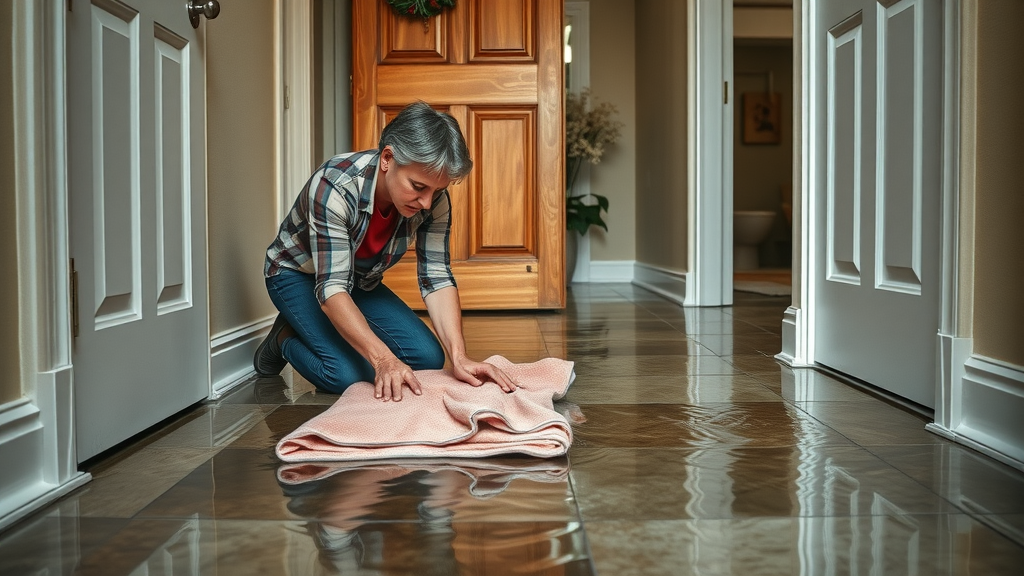
Regular Maintenance: Reducing Risk for Future Plumbing Emergencies
Inspecting Your Plumbing System and Water Supply Lines
Regular maintenance and proactive inspection of your plumbing system and water supply lines are essential to prevent common plumbing emergencies like burst pipes and water leaks. At least twice yearly, check for loose, rusting, or leaking pipes under sinks and in utility spaces. Examine your water supply lines—especially those connected to washing machines, dishwashers, and icemakers—as damaged hoses are a major culprit in household flooding. Even a slow drain can signal early warning signs of system failure.
Monitor your main water shut-off valve for corrosion and easy operation. Check that all visible water pipes—especially those in basements or attics—are properly insulated against temperature extremes to prevent burst pipes. Being aware of your plumbing system’s layout helps you act fast in an emergency, making regular maintenance a critical practice for any homeowner.
Proactive Maintenance for Water Heaters and Toilets
Proactive care for water heaters and toilets can dramatically reduce the risk of sudden plumbing emergencies. Flush your water heater annually to prevent sediment build-up and check the pressure relief valve for proper functioning. Inspect for moisture or rust at the base, which could point to internal damage.
For toilets, listen for constant running, unexplained fluctuations in water levels, or frequent clogging. These are all warning signs of failing internal parts or deeper pipe blockages. Replace supply hoses every few years, and always address a slow drain or overflowing toilet promptly. Regular maintenance saves you from expensive emergency service calls and prolongs the lifespan of your entire plumbing system.
“Regular plumbing maintenance is the best defense against unexpected disasters and costly emergency service calls.” — Local Plumbing Expert
Expert Tips: Routine Plumbing Inspections to Prevent Emergencies
Choosing the Right Plumbing Service for Emergencies
Top Qualities of a Reliable Emergency Plumbing Service
When selecting a plumber for plumbing emergencies, look for 24/7 availability, proper certifications and local licenses, and a proven reputation. Verified customer reviews, transparent pricing, and quick response times all set the best emergency service providers apart. Skilled technicians bring the expertise and specialized equipment needed to manage burst pipes, gas leaks, and severe water damage safely and effectively.
Ask about insurance coverage and warranties on repairs. Working with a reputable plumbing service ensures your home is protected during critical situations and avoids secondary damage that novice repairs could cause. Quality customer service, clear communication, and written estimates are marks of trustworthy professionals.
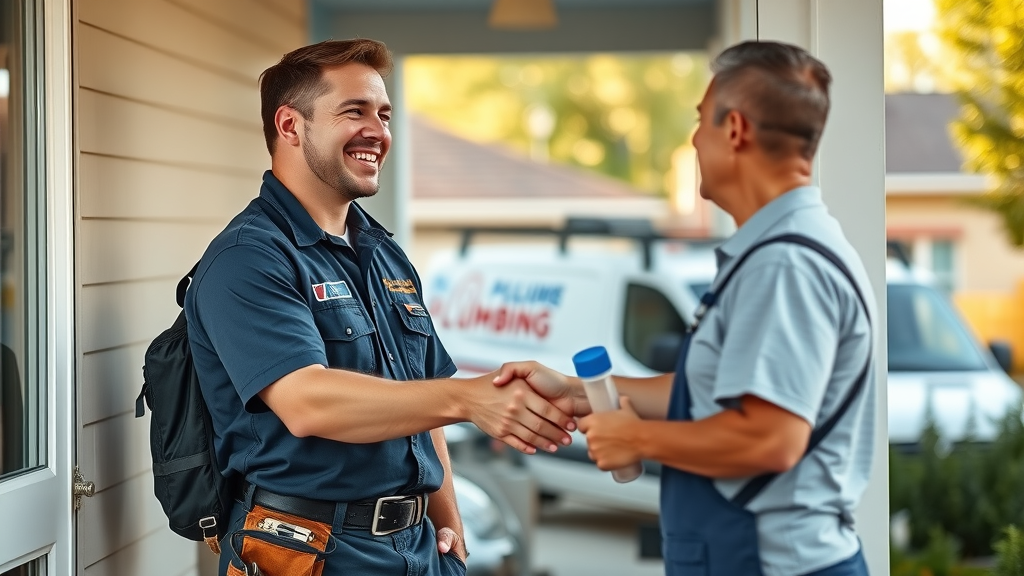
When to Call a Professional vs. DIY Solutions
- Availability: 24/7 plumbing services — For active water leaks, burst pipes, major overflows, or suspected gas leaks, always call a professional.
- Certifications and local licensing — Ensure any plumber you hire has the proper credentials and insurance.
- Reputation and reviews — Research reviews and references for responsiveness and reliable fixes.
Basic clogs or minor leaks can sometimes be handled with a plunger or plumber’s tape, but never take chances with wide-spread flooding, unmanageable toilet backups, or suspected gas leaks—these demand skilled, licensed attention to protect your home.
People Also Ask: How Do You Handle Emergency Plumbing?
How do you handle emergency plumbing?
Answer:
To handle an emergency, first shut off the main water supply to prevent flooding. Isolate the affected area, absorb excess water, and ensure safety by cutting electrical power if water is spreading near outlets. Address any gas leaks by evacuating the area and calling emergency services. Document damage for insurance, and contact a licensed plumberas soon as possible. Never delay action; rapid response protects your home and reduces overall repair costs.
What are the 5 steps to handling an emergency?
Answer:
- Identify the source of the emergency (leak, overflow, gas)
- Shut off the water or gas supply immediately
- Contain and remove water to minimize damage
- Evacuate or secure the area if a gas leak is present
- Call professional emergency plumbing services
What constitutes a plumbing emergency?
Answer:
A plumbing emergency involves a sudden, severe plumbing system failure that threatens property, health, or safety. This includes burst pipes, gas leaks, overflowing toilets, water heater malfunctions, and uncontrollable leaks that you cannot safely manage. Such issues can escalate quickly, making immediate professional intervention essential.
How urgent is a leaking pipe?
Answer:
Even a small water leak can create substantial water damage if ignored. Act as if every leaking pipe is urgent. Shut off the nearest valve, collect escaping water, and schedule quick repairs. Slow leaks breed mold growth, structural problems, and high water bills, so timely action is always needed.
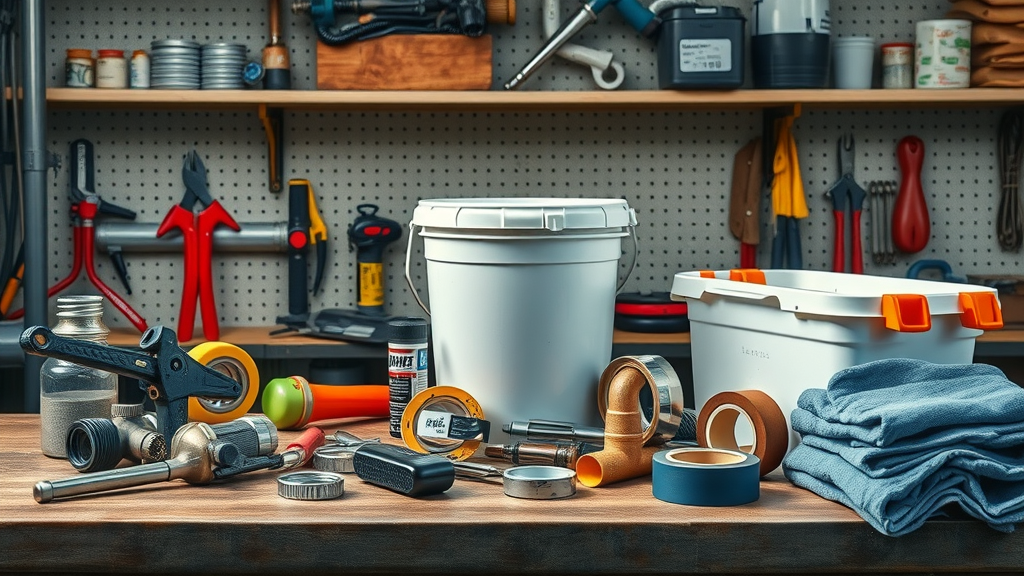
Frequently Asked Questions: How Do You Handle a Plumbing Emergency
Should I try to fix a burst pipe myself?
If you experience a burst pipe, you can attempt a temporary fix (using plumber’s tape or clamps) after shutting off the water, but always call a licensed plumber for a permanent solution. DIY patches may fail, leading to repeated leaks and costlier repairs.
What emergency supplies should I keep at home for plumbing disasters?
Keep a toolkit with a pipe wrench, adjustable pliers, plumber’s tape, duct tape, buckets, towels, and a flashlight. Know the location of your main water valve, and consider a wet-dry vacuum for effective water removal.
How quickly should I react to a water heater leak?
Immediately. Water heater leaks can escalate rapidly, undermining structural stability and posing an electric or gas risk. Shut off the unit, collect water, and arrange professional service as soon as possible.
Key Takeaways: Rapid Response and Ongoing Vigilance
- Swift action and knowledge are critical in any plumbing emergency
- Know the location of your main water shut-off
- Proactive maintenance minimizes plumbing emergencies
- Professional plumbing services are essential in major incidents
Protect Your Property and Peace of Mind
Call us today if you are experienceing a plumbing emergency - 714-290-7401
In a plumbing emergency, every second counts—know the signs, act fast, and don’t hesitate to call expert help to protect your home and your peace of mind.
Sources
- https://www.nahb.org – National Association of Home Builders
- https://www.angieslist.com – Angie’s List Plumbing Emergencies Guide
- https://www.statefarm.com – State Farm: Water Damage and Homeowners Insurance
